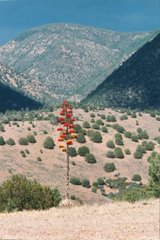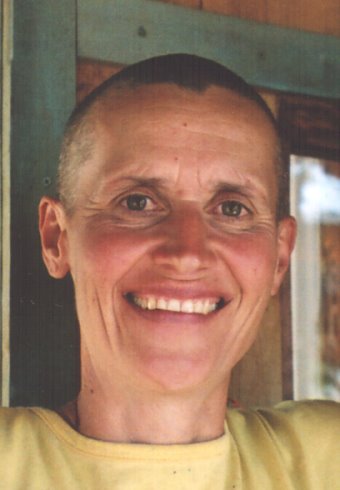I suspect everyone reading this blog is 'family', and so is aware of the push to secure this land once and for all, free of debt and the ever-present thundercloud of potential loss. Ever since I have lived here it has been on the razor edge of mortgage payments, seemingly endless; when one gap is filled, the next appears. As each of us has surely experienced on some scale in our lives, the land of credit and loans has as its foundation a timebomb. If you haven't heard, and want to know/help, go to www.tarasbabies.org; click on Dakini Valley in the left column for a few pictures.
Well, this will be it for us. This sacred land will be secured for perpetuity, something I can barely grasp. I have not been involved in the hard work of raising the money, and appreciate the time and effort put in by everyone who has, and for the kind generosity of every single donor who shares this vision.
For my part, I have been trying to imbue at least part of my day with prayer and recognition of how important this land is. Of course, I fall into mindlessness most of the time, seeing only the cluttered work bench I need to clear, or the floor which needs to be swept, and seeing these things with very ordinary eyes. And when my alarm goes off - not so very early, I assure you - more often than not i turn it off and continue to doze; i do not leap out of bed to begin a new day in prayer. So even living here, amidst this unfolding beauty and holy awareness - for I am sure it is there - it is easy to forget.
I was contemplating the idea of sacred land, and realised that I have no personal frame of reference for it in my growing-up or culture. Of course, I known of sacred lands - in Australia, they are the cultural heritage of the traditional owners, such as Uluru - the indescribably magnificent red monolith near that continent's very heart. Or here, perhaps of the Native Americans. Or in England perhaps they belong to history, such as Stonehenge. But I cannot think off-hand of sacred land, newly identified, which is 'ours', not associated with another culture or time. Of course, we revere and protect the natural sacredness of pristine landscapes ( some of us wish we did more of this), and these may provide a place for spiritual contemplation. But Dakini Valley, while beautiful, is sacred because of something indefinable, unidentifiable by ordinary mind. It is inherently sacred in ways I do not understand, yet know without doubt to be true.
I read a book some time ago called the "Siege of Shangri-la", about the quest by westerners to discover that hidden valley. One passage struck me at that time, because to me it describes this Valley, our Valley, far, far from the Himalayas, yet not distant at all from Guru Rinpoche's very heart:
" Centuries-old Buddhist texts refer to the hidden valleys, or beyuls, that were scattered throughout the Himalayas by Padmasambava (Guru Rinpoche)...Beyuls are sacred places of mystical retreat, pilgrimage and refuge during times of strife.....Every beyul would have to be found and "opened" by a yogin known as a terton, a "treasure finder", and s/he would be led to the task only when the time was propitious. Certain hidden lands remain unopened to this day. Their discovery awaits the time they are needed."
I find this awe-inspiring to consider, like the blossoming of a rare bloom, long hidden in the wilds, its delicate petals unfolding before our eyes, within our hearts. How fortunate we are to be part of this quest, to be the pioneers who do not conquer, but embrace. Who recognise, perhaps without understanding, that here is something so precious we dare not lose it, for it is not ours. It is everyone's, for always. The documents may describe it simply as 148 acres, but it is boundless, vast. It is a valley no longer hidden, yet secure; and it is aware, awake and welcoming us all.
Subscribe to:
Post Comments (Atom)


No comments:
Post a Comment